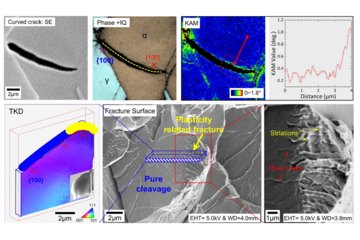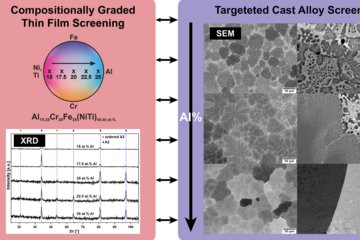All genres
1.
Journal Article
Removal of hydrocarbon contamination and oxide films from atom probe specimens. Microscopy Research and Technique 84 (2), pp. 291 - 297 (2021)
2.
Journal Article
Impact of austenite grain boundaries and ferrite nucleation on bainite formation in steels. Acta Materialia 188, pp. 424 - 434 (2020)
3.
Journal Article
In-situ study on fracture behaviour of white etching layers formed on rails. Acta Materialia 180, pp. 60 - 72 (2019)
4.
Journal Article
Micro fracture investigations of white etching layers. Materials and Design 180, 107892 (2019)
5.
Journal Article
Design of high-strength and damage-resistant carbide-free fine bainitic steels for railway crossing applications. Materials Science and Engineering A: Structural Materials Properties Microstructure and Processing 759, pp. 210 - 223 (2019)
6.
Journal Article
Atomic-scale investigations of isothermally formed bainite microstructures in 51CrV4 spring steel. Materials Characterization 152, pp. 67 - 75 (2019)
7.
Journal Article
Microstructural evolution of white and brown etching layers in pearlitic rail steels. Acta Materialia 171, pp. 48 - 64 (2019)
8.
Journal Article
In-situ observation of strain partitioning and damage development in continuously cooled carbide-free bainitic steels using micro digital image correlation. Materials Science and Engineering A: Structural Materials Properties Microstructure and Processing 757, pp. 107 - 116 (2019)
9.
Journal Article
Correlative Microscopy—Novel Methods and Their Applications to Explore 3D Chemistry and Structure of Nanoscale Lattice Defects: A Case Study in Superalloys. JOM-Journal of the Minerals Metals & Materials Society 70 (9), pp. 1736 - 1743 (2018)
10.
Journal Article
Competition between formation of carbides and reversed austenite during tempering of a medium-manganese steel studied by thermodynamic-kinetic simulations and atom probe tomography. Acta Materialia 147, pp. 165 - 175 (2018)
11.
Talk
The role of carbon in the formation of white etching cracks. Thermes 2018 Annual Meeting & Exhibition, Paris, France (2018)











